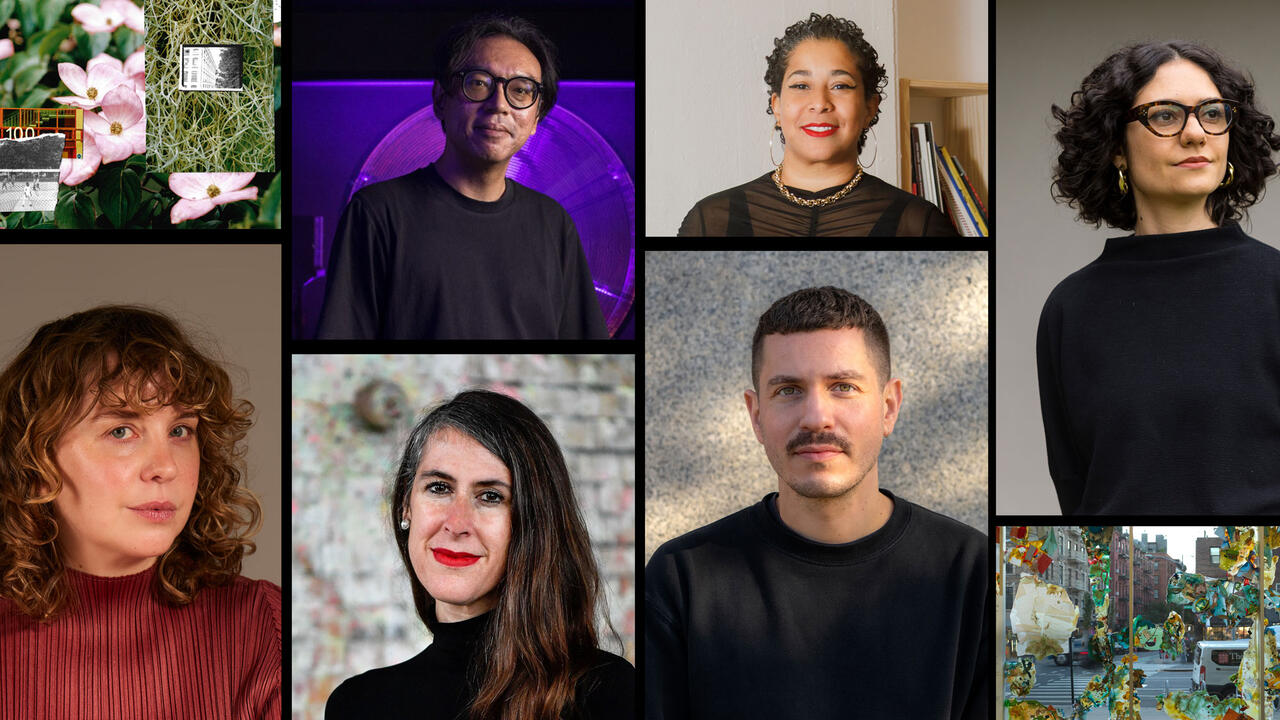Julia Fish
It's hard to write about painting, in part because its spatial condition is so rigidly defined: both virtual (imaginary, illusionistic) and bounded by the frame. Language, too, it seems, has to dance and jump within a rectangular format, bounded and not real, too easily rhetorical and tautological, with nothing concrete outside the frame with which to create relationships except other paintings. In this ten-year retrospective, the formal issues of abstract painting surfaces (layered and scraped), colour, shape, pattern, and flatness are primary concerns, exquisitely investigated. But something else accrues from viewing the exhibition a penetrating look, persistent, grinding even, staring you down as if you could feel the weight of Julia Fish's steady pressure of examination, under which something ineffable seeps, oozes or simply floats up (was that a reference to the sublime?).
Over the ten years that Fish has been living in the Chicago area, her work has been linked with artists pursuing Conceptually-oriented practices. Her own articulate statements have contributed to this association, as has the degree of constraint in the work, which breathes analysis over and above expression. In Fish's work, pleasure doesn't flow, it is extracted, like water from a stone. The paintings are relatively small, and quiet even her hottest oranges, Elm (1988), and most acidic greens (Summer) Pine (1990) read not as exuberance but as measured steady burns. Nature in such works is not wild but tempered, as if pressed through a sieve. The occasional pictures that confuse me, that drop dead in my face, are those that have slid a little too far in either direction from this taut but supple line; either so tight, Thaw (1989), that only pattern prevails and nothing is released, or so smoky or atmospheric Evening (1985), Lumine (1995) and Snowbound (1989) that I feel my muscles sag, and odd names like Rembrandt, the Impressionists and Andrew Wyeth (respectively, and surprisingly) come to mind.
The work could be loosely divided into two camps: abstract distillations of natural phenomena, reminiscent of Arthur Dove and Milton Avery, and cropped views of built surfaces, rendered 'abstract' as if as a by-product of myopically intent observation. The earlier works, such as Rain (1991), Cumulus (1990) or Bricks with Sky (1985), pushed Modernist license by painting rain, dampness and atmosphere as shapes, floating chunks or dispersed chips thrown up against a ground that's ordered and steady. Later, it seems, the exhilaration attained by juxtapositions, like Tar Ice (1987), became available to Fish through even more simplified views that collapse figure and ground ipso facto: a floor, a wall, linoleum, windows all surfaces. What all the works have in common is the absence of spatial orientation. They are landscapes without horizon or illusionistic distance, defined vertically as if plastered like wallpaper up against the window that frames them. Depth is created through the material qualities of paint and through Fish's literal play with the idea of a window. Her windows are close up, disallowing the orientation that distance provides or blocking it with greenery, shadows, or darkness.
In some of these more recent works, Fish represents what we see every day white hexagonal tiles on the bathroom floor, tar paper siding on the building next door and the square of grey framed by any window on any February day in Chicago. There is something comforting, and charismatically fascinating in staring at these familiar patterns. The painting 5811 S. Ellis (1995) the address of the gallery was installed opposite the window which frames the stone surface represented by the painting; although the proportions are smaller in the painting, and the colour greener and richer than the granite. It seems important that the title is not the address of the building next door, but of the gallery from which we look out at it. The title suggests that the subject is not the view itself but the place where we, the viewers, stand, and where by implication, the painter stood and looked too. This reference to a location, which links and places both maker and looker, is the most literal example of what Fish does more subtly in other works. It is the sort of conceptual liaison that distinguishes her work from that of painters who take refuge only in the virtual and bounded. In this, her painting connects with work in other media concerned with relations between maker and looker, giving them an activated presence and relevance that compels attention and curiosity.













